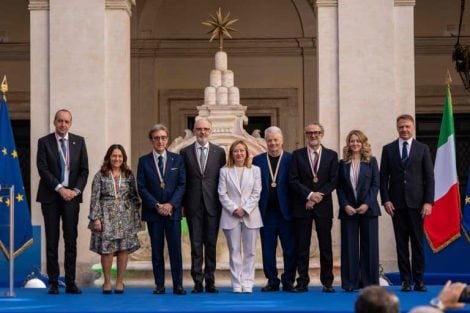Umbria has never played a central role in the geopolitics of Italian cuisine, especially in the "high-end" segment. A small, isolated region, with a population historically less inclined to invest in dining out and a limited industrial fabric that does not support the sector. Because certain tables are frequented for the pleasure of doing so, of course, but without a business clientele, it's tough to make the accounts work. That's why what has happened in recent years is incredible. As if someone had lit a fuse, giving rise to a series of quality openings numerically off the scale, capable of overturning the very identity and external gastronomic perception of the region.
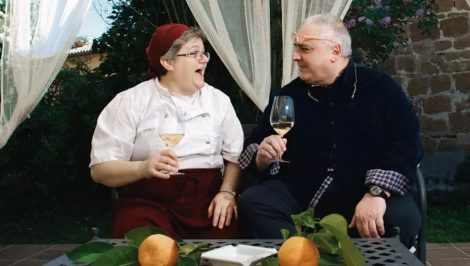
Mauro Stopponi and his wife Anna Rita Simoncini, together with their daughters Serena and Chiara, lead the Sette Consoli in Orvieto
Umbria, famous tables, and chefs
Let's be clear: in Umbria, there have been great chefs and excellent restaurants in the past, but that's not the point. Success stories have always seemed episodic, the result of individual experiences rather than a fertile ground or, even less, a "system." Not by chance, one of the clearest talents that the region and Italy have ever had, Angelo Paracucchi from Cannara, sought and found glory far from home. Others? Obviously Gianfranco Vissani, for a long time the most innovative, famous, and media-exposed chef, then the Sette Consoli and Trippini, to stay in the Orvieto area. At Lake Trasimeno, Luciano's star shone, in Foligno that of Luisa Scolastra (Villa Roncalli), in Spello Marco Gubbiotti (La Bastiglia, now involved in the original Cucinaa project), in Città di Castello Marco Bistarelli with his Postale, in Perugia Osteria del Bartolo. More recently, Vespasia in Norcia, Michelin Star since 2016 and now also Green Star.
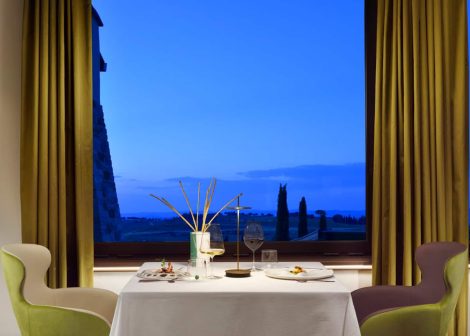
Elementi, fine dining at Borgo Brufa. Opening with the spit roast at Il Capanno in Spoleto
The new Umbria of taste
Isolated cases in space and mixed in time, unrelated to the richness and collective scope of the current proposal. The taste of Umbria is here and now: a forge of young promises in the kitchen and contemporary venues, capable of drawing a more and more luminous and articulated constellation. A modernity that arrived suddenly, but perhaps not by chance. Meanwhile, the region has an increasingly pronounced tourist vocation and attracts travelers less inclined to 'bite and run' than in the past, eager for authentic experiences and with a good high-spending range. Then there is a generation of locals much more curious than previous ones, attentive to the quality and origin of raw materials, more than ever willing to invest in satisfying dining experiences. Naming names and making lists is not easy because the scene is vibrant and dynamic, capable of expressing different peaks but also a central body never so well-nourished and interesting.
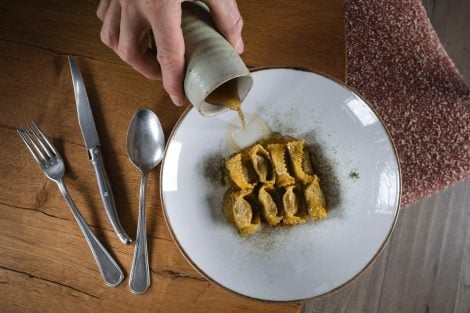
A dish by Marco Lagrimino at L'Acciuga: plin ravioli filled with chicken, roasted potato broth, and herb powder. Photo by Lido Vannucchi
From Acciuga to Luce
In Perugia, starting with L'Acciuga by Luca Caputo is a must. Not only because it brought a "macaron" back to the city but especially for the style with which it did so; both in the kitchen and in the management of the dining room and furnishings. A restaurant that was born on the outskirts but capable of carving out a central role with determination, vision, and a formula that grew over time. The ideas of chef Marco Lagrimino are seemingly simple but technically complex and convey the great work done behind the scenes with cleanliness, detail, and immediacy.
A place where you feel good and drink very well, between cocktails and a selection of top-notch wines; once almost exclusively the domain of "natural" and hyper-artisanal productions, now capable of ranging across all fronts, with different iconic bottles on the menu. Also in Perugia, but in the heart of the acropolis, there is Luce. A suggestive and atmospheric restaurant that brothers Francesco and Paolo Gori, chefs by training but capable of dividing themselves between the dining room and the kitchen, have built in their image and operate to perfection. The proposal starts from the best of the territory and ends with original, tasty, immediately understandable dishes, with an "inclusive" level of creativity that does not flatten out on any cliché, equidistant from raw tradition and "fine dining" for its own sake.
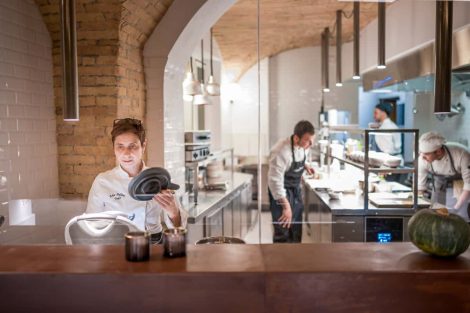
Ada Stifani in her kitchen at Ada Gourmet
From Ada Gourmet to Annina Locanda
The second city star is the merit of Ada Stifani, surprising for the speed with which she achieved it. The Ada Gourmet sign, which follows the successes and innovative spirit of L'Officina, is born on the ground floor of a building in the Sant'Ercolano area: characterized by brick vaults, elegant furnishings, an open kitchen, and an impressive underground cellar. The style is what the chef has accustomed us to, rich in creative grafts, a combination of elements and articulated flavors, brought to the highest possible levels. And we are only at the beginning. The Perugian circle is closed by another young bet: Annina Locanda of the brothers Matteo and Lorenzo Rossi. A splendid place, immersed in nature but a few kilometers from the city, with a crazy view and a cuisine based on "basque" references to grilling and smoking. We'll see where it will go.
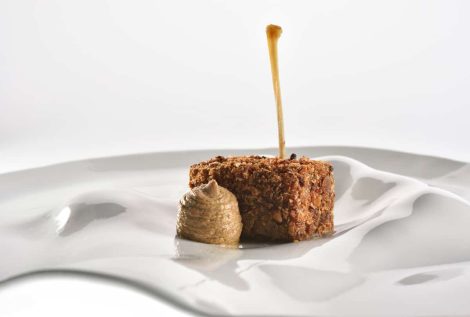
Elementi Fine Dining dello Spa Resort Borgo Brufa: a dish by Andrea Impero
From Torgiano to Foligno
Also Torgiano, a land long dedicated to food and wine tourism, reaches unexplored culinary heights with Elementi Fine Dining in the beautiful Spa Resort Borgo Brufa (another brand new Michelin Star). Here, Andrea Impero, an adopted Umbrian, has managed to conduct a sensational investigation into raw materials and artisans of the territory to create menus of delicious elegance, capable of combining reasoned paths with immediate satisfaction and perfect scenic representation.
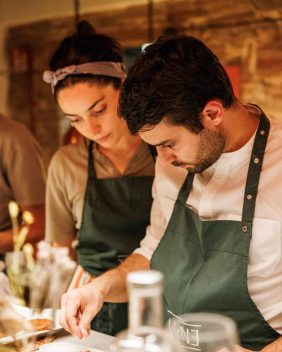
Giulio Gigli, chef di UNE
Another starred table, but of totally different inspiration for technique, experiences, concept, environment, and spirit is that of Giulio Gigli and his crew. Une is born in an old mill in Capodacqua di Foligno and is among the most dynamic, contemporary, and rock venues on the Umbrian gastronomic scene. It could not be otherwise, given the chef's long experiences around the world and especially in the playground of Oriol Castro, Mateu Casañas, and Eduard Xatruch: Disfrutar in Barcelona. Buckle up, here the flavors of memory travel in a canalizing flow of technique and fantasy, giving off sparks. In the city of Foligno, another new entry about to launch is Silene Piccolo Ristorante by chef Nicoletta Franceschini, already at the stoves of Niko Romito and Antonia Klugmann. A sensitive hand, especially with vegetables, and unusual combinations for flavors that go beyond purely territorial boundaries.
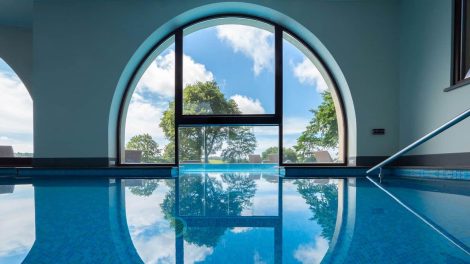
The charming pool with spa at Relais La Chiaracia
From luxury to nature
As mentioned, the list could go on, and it is impossible to include everyone in the survey. However, among the novelties, we bet on two realities, geographically and stylistically distant but united by a strong underlying idea that does not bend to compromises. We are talking about the restaurant Radice at Relais La Chiaracia in Castel Giorgio, in the Orvieto area, and Tenuta Santa Cecilia, near Gubbio. In the luxury of the former, chef Daniele Auricchio plays with contrasts and proposes decidedly unaccommodating dishes, full of grit and intensity, while the dining room is masterfully directed by Mauro Clementi, one of the best in Umbria in that role. The latter is an extraordinary place for landscape, nature, and project: 320 hectares of woods, olives, forage, wildlife, free-range lambs and pigs (from which wonderful cold cuts are made), scattered suites, and a restaurant. Here, patron Giuseppe Onorato takes care of hospitality and the cellar, while the kitchen is in the hands of the returning Eugubino Alessio Pierini and Serena Sebastiani. Truly immersive, the dishes evoke the territory with class and insight, recalling the flavors of the woods and wild nature in an original way. For us, among the best experiences in the region.
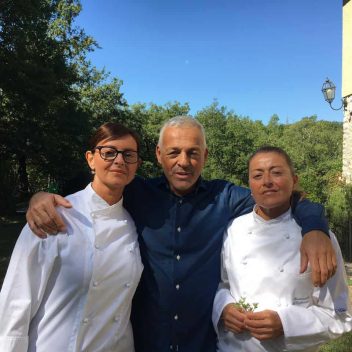
The Shed in Spoleto: Mauro Rastelli with the kitchen managers, Cristina Rastelli and Daniela Filippi
Creativity and tradition
Then there should be mentioned perhaps less "hype" signs but of quality, such as San Giorgio, Bosco 131, Osteria del Posto, Officina dei Sapori, Al Divino, Il Frantoio in Assisi, and others who, in some way, have embarked on paths capable of leaving a mark and contribute to the scenic polychromy. It would also be unfair to confine the grace of Umbria to only "fine dining" restaurants. On the "traditional" front, things are no less good, with some consolidated cornerstones like Il Capanno, near Spoleto, and Stella Ristornate Vineria, in Perugia, but also with newly opened tables managed by young people. Experiences like La Risulta in Ponte San Giovanni and Lillero in Terni deserve attention, gems of a trend that we hope will bear other fruits. And then there are venues that have made the territorial context a clear stylistic feature, becoming bastions of their respective products. Il Rosso di Sera and Il Molo for the fish of Lake Trasimeno, Re Tartù and San Pietro a Pettine for truffles, just to name a few. Not to mention the positive moment of quality pizzerias (did someone mention Meunier in Corciano?) and ethnic restaurants, starting with the magical world of Il Vizio in the Best Western Quattrotorri in Perugia.
Today's Umbria carries itself higher, for sure, but also knows how to take entirely new and somewhat unexplored paths. Full of fresh forces, loaded with dreams and energy, which seem to want to continue running and playing."

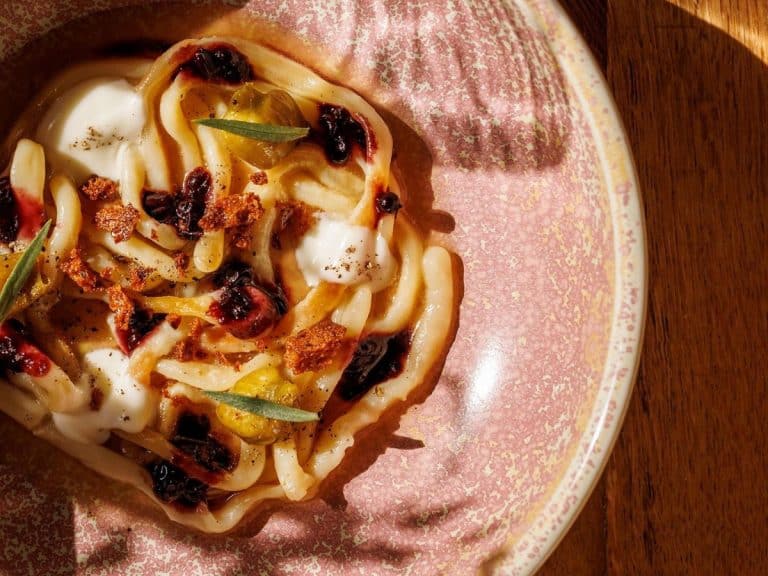
 Farewell cacio e pepe in New York. "With tariffs, Pecorino Romano will also become more expensive." The warning from Giuseppe Di Martino
Farewell cacio e pepe in New York. "With tariffs, Pecorino Romano will also become more expensive." The warning from Giuseppe Di Martino Against tariffs? Here are the US foods that could be "hit"
Against tariffs? Here are the US foods that could be "hit" US tariffs: here are the Italian wines most at risk, from Pinot Grigio to Chianti Classico
US tariffs: here are the Italian wines most at risk, from Pinot Grigio to Chianti Classico "With U.S. tariffs, buffalo mozzarella will cost almost double. We're ruined." The outburst of an Italian chef in Miami
"With U.S. tariffs, buffalo mozzarella will cost almost double. We're ruined." The outburst of an Italian chef in Miami "With US tariffs, extremely high risk for Italian wine: strike deals with buyers immediately to absorb extra costs." UIV’s proposal
"With US tariffs, extremely high risk for Italian wine: strike deals with buyers immediately to absorb extra costs." UIV’s proposal
